Tanner the Triceratops has become one of the most beloved dinosaur crochet patterns among crafters of all skill levels. This charming amigurumi design combines playful aesthetics with approachable techniques, making it the perfect project for crocheters looking to expand their skills beyond basic patterns. Standing approximately 10 inches tall when sitting and 13 inches when upright, Tanner the Triceratops creates an impressive finished piece that captivates dinosaur enthusiasts of all ages.
Why Tanner the Triceratops Is a Must-Make Crochet Pattern
What makes Tanner the Triceratops stand out among the countless amigurumi patterns available today is its perfect balance of visual impact and technical accessibility. The pattern utilizes straightforward stitches that even advanced beginners can master, while producing a finished dinosaur with impressive detail and character. The distinctive three-horned profile, textured frill, and sturdy posture immediately identify this creation as the beloved triceratops from prehistoric times.
Parents and grandparents particularly appreciate Tanner the Triceratops as a handmade gift option because dinosaurs continue to fascinate children across generations. Unlike many mass-produced toys, this handcrafted triceratops offers personalization opportunities through color choices and optional embellishments, creating a truly unique keepsake that can be treasured for years.
Crafters who sell their creations have also embraced Tanner the Triceratops as a popular market item. The finished dinosaur’s substantial size and professional appearance command higher prices than smaller amigurumi projects, while the relatively straightforward construction process keeps production time reasonable for craft business owners.
Essential Materials for Creating Tanner the Triceratops
Before beginning your Tanner the Triceratops project, gather these key supplies:
- 4.0mm (G) crochet hook – smaller than typically recommended for worsted weight yarn to create tight stitches that prevent stuffing from showing through
- Worsted weight yarn (medium weight 4) in three colors:
- Main body color (teal in the sample) – approximately 218 yards
- Contrasting color for legs and arms (gray in the sample) – approximately 59 yards
- Small accent color for details (white in the sample) – approximately 4 yards
- Polyester fiberfill stuffing
- 12mm safety eyes (or yarn for embroidered eyes if making for young children)
- Tapestry needle for assembly
- Stitch markers
- Scissors
The pattern recommends WeCrochet/Knit Picks Brava Worsted yarn for its durability and vibrant color options, though any medium weight yarn with good stitch definition will work well. The total yardage requirements make this an excellent stash-busting project for crafters with partial skeins available in complementary colors.
Mastering the Key Techniques for Tanner the Triceratops
Despite its impressive finished appearance, Tanner the Triceratops employs standard amigurumi techniques that most crocheters with basic experience can master:
- Magic ring starts for clean beginnings on all rounded pieces
- Continuous rounds for most components, eliminating visible seam lines
- Invisible decreases (SC2tog worked through front loops only) for smooth shape transitions
- Foundation single crochet for the frill base, though a chain alternative is provided
- Strategic color changes that enhance dimensional features
- Special assembly techniques that create the characteristic triceratops posture
The most challenging element for many crafters is the frill construction, which uses back-and-forth rows with strategic increases to create the signature scalloped edge. The pattern provides detailed guidance for this section, including clarification about the repeat pattern and how to properly join the front and back frill pieces.
What makes this pattern particularly valuable for advancing crocheters is the attention to small details that significantly enhance the final appearance. The embroidered nails on each foot, careful positioning of the horns, and strategic stuffing all contribute to a professional-looking finished dinosaur that appears much more complex than the techniques actually required.
Step-by-Step Creation Process for Tanner the Triceratops
The construction of Tanner the Triceratops follows a logical sequence:
- The body forms the foundation, with 24 rounds of carefully planned increases and decreases creating an egg-shaped form that provides stability for the sitting position.
- The head, worked in 30 rounds, incorporates subtle shaping that creates the characteristic triceratops profile with its elongated face.
- The distinctive horns—one small nose horn and two larger brow horns—use simple construction but create dramatic visual impact when positioned correctly.
- The signature frill combines front and back pieces in contrasting colors, creating a dimensional effect that stands upright behind the head.
- The legs and arms use identical construction methods with different proportions, each beginning with a wide foot/hand that narrows at the limb.
- The tail provides the perfect finishing touch with its gently curved shape that balances the forward-heavy design of the triceratops.
Assembly progresses systematically, with each component positioned to create the characteristic dinosaur pose. The pattern provides clear guidance on positioning, including specific stitch counts for precise placement of each element.
Personalizing Your Tanner the Triceratops Creation
One of the greatest strengths of the Tanner the Triceratops pattern is its adaptability. The basic pattern serves as an excellent foundation for countless variations:
- Color combinations can completely transform the character—from natural earth tones for a realistic dinosaur to bright primaries for a playful children’s toy
- Size adjustments are possible by changing yarn weight and hook size—the pattern includes links to both mini and super-sized versions
- Themed variations like “Strawberry Tanner the Triceratops” offer seasonal or special occasion options
- Additional embellishments such as spots, stripes, or decorative stitches can further customize the basic design
- Optional accessories like tiny hats, scarves, or backpacks can personalize the finished dinosaur
Many crafters find that after mastering the basic Tanner the Triceratops pattern, they can create an entire herd of dinosaurs in various colors and sizes, each with its own personality but recognizably from the same pattern family.
How Tanner the Triceratops Compares to Other Dinosaur Patterns
In the expanding universe of dinosaur crochet patterns, Tanner the Triceratops holds a special place for several reasons:
- The balanced proportions create a dinosaur that can stand independently without support, unlike many top-heavy designs
- The distinctive three-horned profile and frill make this dinosaur immediately recognizable, even to young children
- The intermediate size (larger than typical amigurumi but smaller than stuffed animal patterns) hits the sweet spot for both display and play
- The construction techniques introduce skills that transfer well to other advanced amigurumi projects
- The pattern forms part of a cohesive dinosaur collection, allowing crafters to create multiple matching prehistoric creatures
While simpler dinosaur patterns might use basic sphere shapes modified with minimal features, Tanner the Triceratops employs carefully planned increases and decreases to create anatomically suggestive forms. The body tapers appropriately, the head features subtle shaping, and the limbs have dimensional feet—all contributing to a more sophisticated and realistic final appearance.
Perfect Occasions for Creating Tanner the Triceratops
Tanner the Triceratops makes an ideal project for numerous occasions:
- Birthday gifts for dinosaur-loving children
- Baby shower presents that stand out from typical infant items
- Classroom teaching aids for prehistoric science units
- Craft fair inventory that appeals to multiple generations
- Photography props for professional photographers
- Home decor for children’s bedrooms or playrooms
- Charity donations for children’s hospitals or community fundraisers
The relatively quick completion time—most crafters finish in 8-10 hours spread across several sessions—makes it feasible for gift-giving deadlines or market preparation. The modest yarn requirements also make it economical to produce in quantity, with many crafters able to create multiple dinosaurs from their existing stash.
Why Beginners Succeed with Tanner the Triceratops
Though classified as an “advanced beginner” pattern, Tanner the Triceratops has a remarkable success rate even among relative newcomers to amigurumi for several reasons:
- The pattern uses only fundamental stitches—primarily single crochet with increases and decreases
- Each component is clearly explained with exact stitch counts for every round
- The construction follows logical progression from simple to more complex elements
- The assembly guidance includes specific placement instructions with stitch counts
- The finished dinosaur looks impressive even with minor imperfections in execution
Many beginners report that Tanner the Triceratops was their first “serious” amigurumi project, acting as a confidence-building bridge between basic patterns and more complex designs. The satisfaction of completing such an impressive-looking creature motivates many crafters to continue expanding their skills with additional projects.
With its perfect balance of challenge and charm, Tanner the Triceratops represents the best of modern amigurumi design. The thoughtful construction creates an immediately recognizable prehistoric character while teaching valuable techniques that enhance your overall crochet skillset. For both dinosaur enthusiasts and crafters seeking to expand their repertoire with a project that balances complexity and accessibility, Tanner the Triceratops offers the ideal next step in your crochet journey.



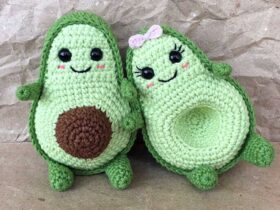
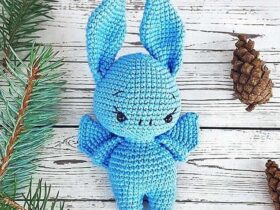
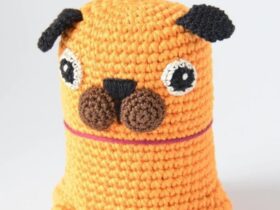
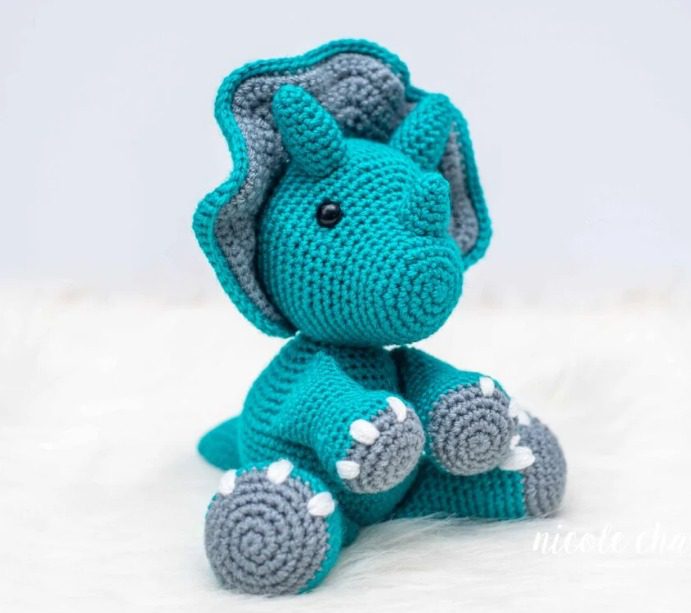


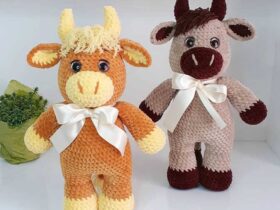

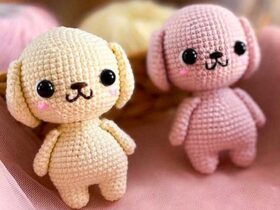
1 Comment